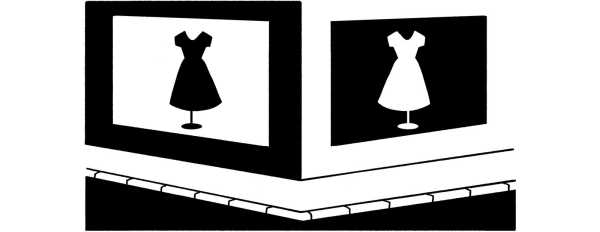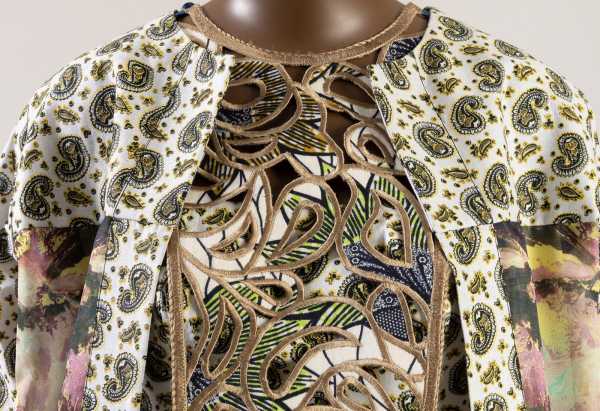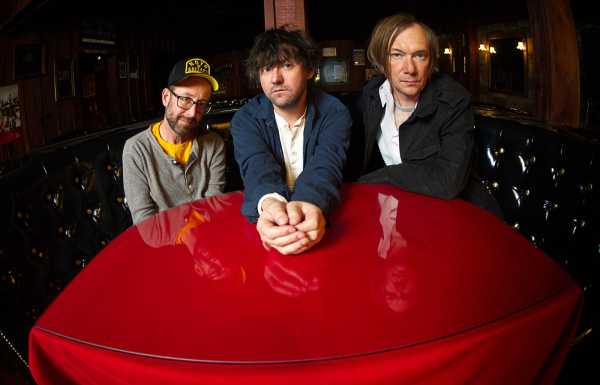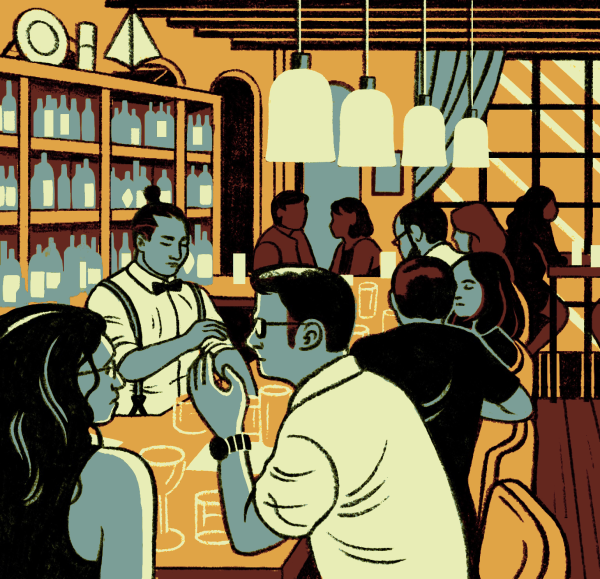
Save this storySave this storySave this storySave this storyYou’re reading the Goings On newsletter, a guide to what we’re watching, listening to, and doing this week. Sign up to receive it in your in-box.

On and Off the Avenue
Rachel Syme checks out some of the city’s trendiest piercing studios.
Like so many other mall rats of many generations, I first got my ears pierced at Claire’s, a kitschy accessories emporium for tweens and teens. I was fifteen and flush with babysitting tips; a gum-popping sales girl not much older than myself aimed a piercing gun at my lobes and fired at will. Now, thanks, in part, to Instagram and TikTok, the ear-stabbing landscape has evolved a great deal; these days, everyone seems to desire a “stack,” or an artful constellation of several earrings scattered around. Popular piercings of the moment are the “conch” (the indented crescent midway up the ear), the “rook” (the shelf of cartilage that runs across the ear’s upper half), the “cat flap” (a thin overhang of skin at the top of the ear), and the “tragus” (the tough little nubbin close to the jawbone). These placements require a delicate hand and expertise, far beyond that of a teen-ager working steps from a Cinnabon.

Illustration by Roche Cruchon
In 2019, the entrepreneurs Lisa Bubbers and Anna Harman launched Studs, which specializes in what Bubbers calls “Earscaping,” a term Studs has trademarked; they have twenty-seven piercing studios around the U.S., with four more opening this year. I visited the Nolita and meatpacking locations, and both were sardine-full, with long wait lists to get jabbed. With an Instagram-friendly aesthetic—bright-yellow jewelry pouches, neon signage—the brand is vying to become the Claire’s du jour, but for a slightly older clientele. (The average Studs customer, Bubbers told me, is twenty-seven and seeking a “second or third piercing.”) Studs offers needle-only piercings—as opposed to the imprecise gun method—and requires its employees to undergo a six-week apprenticeship. The shop’s signature is its Snakebite—two tiny studs right next to each other, anywhere on the ear—a procedure that has attracted several celebrities to Studs. (The brand’s publicist was quick to drop names such as Kaia Gerber, Usher, and Jennifer Lopez.)
Several skilled piercers, many with their own boutique studios, have lately become mini-celebrities themselves. Cassi Lopez, who owns So Gold Studios, in Williamsburg, has amassed more than a million TikTok followers. Adrian Castillo, a thirty-six-year-old veteran piercer from California with a laid-back, skaterish vibe, also has a large cult following (including, he said, several celebrities, but he won’t pierce and tell). One recent afternoon, I went to see Castillo at his elegant new studio, 108 Ceremony, in Greenpoint. I invited him to “curate” my right ear—to choose any placement, any piercing—and he suggested a small diamond stud in my antihelix, a fatty slab of cartilage near the upper ear. He deftly speared it with a thick needle; I felt a small squeeze, followed by an odd popping sound. Later, as my ear began to throb, I noticed that although Castillo was covered in tattoos, he had no piercings of his own. “I’m a wimp,” he said, adding with a sly grin, “I mean, I’m gentle. But I don’t trust anyone else to be.”
Spotlight

Ensemble in cotton wax print and chiffon (detail), by Aisha Ayensu for Christie Brown, from 2016.
Photograph courtesy Museum at F.I.T.
In her work as a curator, Elizabeth Way has introduced us to a number of fashion makers, who, without her persistence and curiosity, would have escaped notice. In the important book “Black Designers in American Fashion,” a collection edited by Way, from 2021, she wrote about the lost history of Black dressmakers in nineteenth-century Manhattan. As the associate curator of costume at the Museum at F.I.T.—headed by the brilliant and redoutable Valerie Steele—Way has had access to history and ideas through clothing, and the latitude to examine ways in which garments are often the true markers of an epoch.
In Way’s new exhibition, “Africa’s Fashion Diaspora” (at the Museum at F.I.T. Sept. 18-Dec. 29), she demonstrates how the African diaspora, which extends from the continent to Brooklyn and the rest of the world, is associated with not so much a singular aesthetic as a different aesthetic, which has influenced European fashion and fashion makers but also painters like Kerry James Marshall, who has a deep understanding of how the outside expresses the inside. This wonderful survey includes such scintillating game changers as Madame Willi Posey—the mother of the artist Faith Ringgold—represented here by a flowing tunic from the early nineteen-seventies. Also on view is the work of the incredible innovator Ann Lowe, who created the wedding dress for a young woman named Jacqueline Bouvier, for her marriage to John F. Kennedy, then a U.S. congressman, on that long-ago morning in Rhode Island.—Hilton Als

About Town
Dance
The main attraction of the Fall for Dance Festival lies in its democratic approach to pricing (thirty dollars per ticket) and programming—the organizers cast a wide net. Each of five programs comprises three works. You’re almost guaranteed to enjoy something; the opposite is also true. The opener includes the first ever New York appearance by the National Ballet of Ukraine, in “Wartime Elegy,” a ballet by the New York-based Russian-Ukrainian choreographer Alexei Ratmansky (Sept. 18-19). In Program 3 (Sept. 24-25), the Chicago-based tap ensemble M.A.D.D. performs a tribute to Nina Simone, and Program 5 spotlights juggling, filtered through a mood of surrealist whimsy reminiscent of Pina Bausch, in a performance by the British group Gandini Juggling (Sept. 28-29).—Marina Harss (City Center; Sept. 18-29.)
Off Off Broadway
In Matt Freeman’s often frustrating comedy “The Ask,” directed by Jessi D. Hill, a young fund-raiser from the A.C.L.U. named Tanner (Colleen Litchfield) tries to woo back a runaway boomer donor, Greta (Betsy Aidem). A portentous photograph of a dinosaur hangs on Greta’s wall: she’s out of date, annoyed by shifting language, insisting on “service” for her dollar; Tanner is the next generation, awkwardly performing obeisance until the check clears. Freeman’s play isn’t a drama of ideas: there’s neither symmetrical engagement (Tanner can say only “I hear you”) nor any immediate stakes—if Tanner fails, Greta’s money will simply go to another liberal cause. It is, though, a distressing vision of the philanthropic left, as a tar pit where hurt feelings bog down even well-meaning attempts at collective progress.—Helen Shaw (Wild Project; through Sept. 28.)
Indie Rock

Photograph by Nik Freitas
Photograph by Nik Freitas
The Omaha band Bright Eyes sprang up in the late nineties as a disgruntled, sensitive outfit revolving around the bawling multi-instrumentalist Conor Oberst; it eventually took on the producer Mike Mogis and the arranger Nate Walcott. The group advanced beyond lo-fi emo angst with “LIFTED . . .” (2002) and “I’m Wide Awake, It’s Morning” (2005), which both embraced a more folk-focussed sound, but by 2011 the core members had split to pursue individual projects. In 2020, Bright Eyes finally returned from hiatus, with “Down in the Weeds, Where the World Once Was,” a record dwelling on transience. This month, the band gears up to release “Five Dice, All Threes,” which captures a group that seems both surprised and grateful to still be around.—Sheldon Pearce (Brooklyn Steel; Sept. 19.)
Readings and Talks
In her verse-memoir “Brown Girl Dreaming,” Jacqueline Woodson remembers her youth. Ten years after its publication, we aren’t anywhere close to forgetting. The award-winning work, told through a mix of free verse and haiku, offers a poignant and nuanced look at a young person growing up Black in the nineteen-sixties and seventies, finding herself through the art of writing. On Sept. 21, Symphony Space celebrates its decennial with conversations about the text and music by the blues-folk artist Toshi Reagon. Guests include an array of other brilliant women, such as the actress and producer Nicole Ari Parker, the writer Roxane Gay, and, of course, the dreamer herself.—Jane Bua
Off Broadway

Photograph by Pia Johnson
S. Shakthidharan’s multigenerational epic, “Counting and Cracking,” spans decades: in a time-jumping narrative, scenes happen as long ago as 1957, in Sri Lanka, or as recently as 2004, when a young Australian man—who doesn’t speak his ancestral tongue, Tamil—learns his and his family’s difficult history. The fleet nineteen-person production, directed by Eamon Flack, exhibits immense meta-theatrical playfulness: a Slip ’N Slide acts as a Sydney beach; a tart grandmother rebukes a chap for sitting onstage, until he explains that he’s there to translate the scene into English. (She bops him anyway.) S. Shakthidharan and Flack, even while illustrating a civil war, demonstrate the noisy, hard-won delight of multiculturalism; the more languages we hear, the more the company seems to accelerate into dizzying joy.—H.S. (N.Y.U. Skirball; through Sept. 22.)
Movies
Robert Kolodny’s faux documentary “The Featherweight,” about the real-life boxer Willie Pep’s effort, in 1964, to make a comeback at the age of forty-two, catches the tone of that era with an uncanny vividness. Willie (James Madio), a former champion and a local hero in Hartford, Conn., is desperate for income but too proud to take a regular job. His grown son (Keir Gilchrist) is battling addiction and causes trouble with Willie’s new wife, Linda (Ruby Wolf), a much younger former actress who returns to work despite Willie’s jealous rage. Meanwhile, the filmmakers, invited by Willie to film his life, end up documenting bad behavior and dodging the family’s requests to keep it under wraps. The movie’s performances are tangy, and the production design is enticing; the tale of bitter conflicts dispels any nostalgia.—Richard Brody (In limited release.)

Bar Tab
Jiayang Fan samples fancy cocktails near Union Square.

Illustration by Claire Merchlinsky
The formidably sleek Japanese cocktail lounge Martiny’s, near Union Square, is not the place to go if you’re short on time, flexibility, or a corporate expense account. Two friends found out the hard way one Thursday evening, when they were told that the wait would be two hours, and then, upon being seated, that they would need to vacate the premises within an hour and forty-five minutes. The establishment, occupying three cavernous stories of a former nineteenth-century carriage house, projects Old World opulence, and seems designed to impress a younger colleague or to woo a romantic interest woefully out of one’s league. The staff conveys a regal discipline, a militaristic sense of order, evident especially in the exquisite attention to detail with which libations are made. (The hand of Takuma Watanabe, once the head bartender of the beloved speakeasy-style Angel’s Share, and Martiny’s founder, is readily apparent.) Behind the gleaming bar, two young men shook, swirled, and layered their creations with the dedication and agility of Olympic ribbon dancers who have inexplicably found themselves dressed as English butlers. The blue-cheese sake Martini, tasting less pungent than one would expect, was stylized and voluptuous. The house classic, a sybaritic blend of whiskey, tomato water, grapefruit, lime, basil, and milk, called the Caprese, after the salad, pinkened the cheeks of the self-confessed lush among the friends after three sips. “Maybe it’s true what they say,” she mused out loud. “The best Martinis taste like stealth luxury and a well-composed American sonnet.” “No one has ever said that,” her acid-tongued companion replied. She wasn’t even drinking a Martini, he pointed out. And he wasn’t sure that she would be able to distinguish “unserious, overpriced aromatic water in shiny stemware” from a proper one.
P.S. Good stuff on the Internet:
- Public goods for public good
- The future of TV
- Charles Bell’s version of “My Favorite Things”
Sourse: newyorker.com